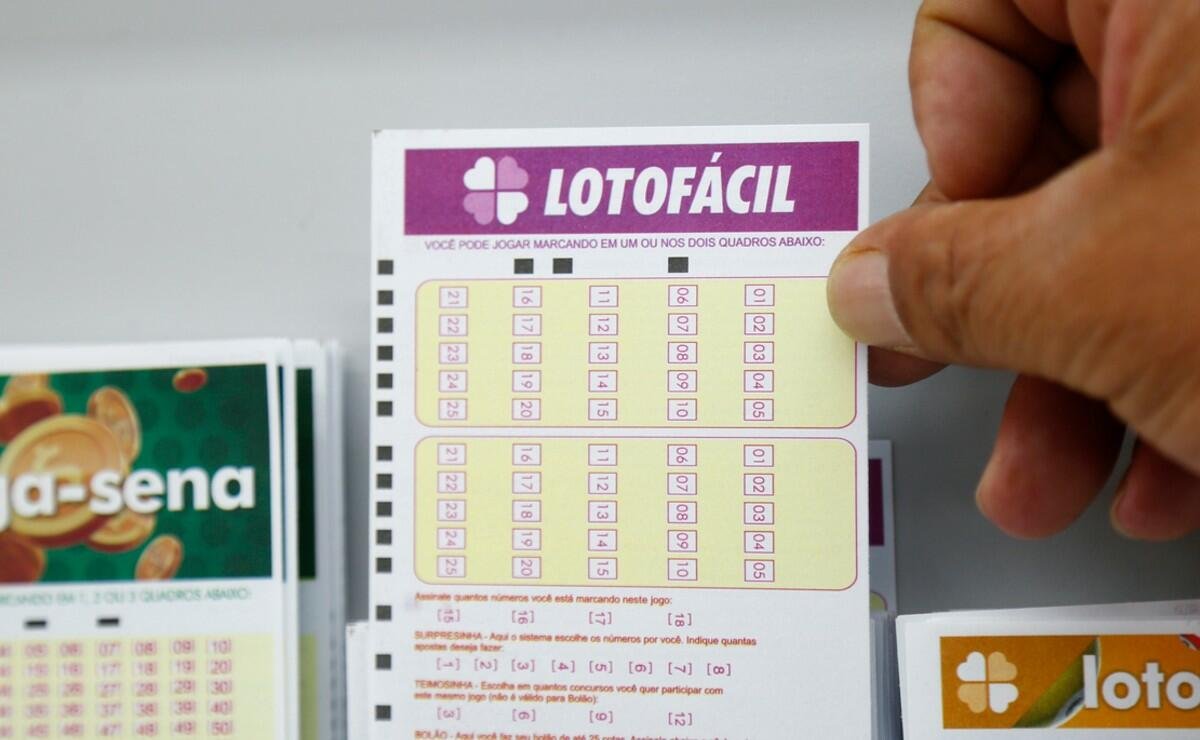$5 minimum deposit online casino
resumo: Maroon 5 - Sunday Morning Massacration - Metal Is The Law
- $5 minimum deposit online casino:not�cias
- $50 reais gr�tis para apostar
- * bet com
- 0 5 gols apostas
- 0 5 gols bet365
- 0 na roleta
- 0.5 aposta
- 0.5 bet
- 0.5 gols bet365
- 007 cassino royale netflix
- 017 bet net
$5 minimum deposit online casino:not�cias

O Barcelona venceu o Almer�a por 3 a 2 hoje (20), no Est�dio Ol�mpico Llu�s Companys,$5 minimum deposit online casinopartida pela 18� rodada do Campeonato Espanhol.
Os gols do Bar�a foram marcados por Raphinha (aos 33 minutos do primeiro tempo) e Sergi Roberto (aos 15 e aos 38 do segundo tempo). O Almer�a balan�ou as redes com L�o Baptist�o (aos 42 do primeiro tempo) e �dgar Gonz�lez (aos 26 da etapa final).
Raphinha voltou a marcar pelo Barcelona ap�s quase tr�s meses. O atacante passou 12 jogos$5 minimum deposit online casinobranco desde a partida contra o Mallorca,$5 minimum deposit online casino26 de setembro. O brasileiro ainda participou de mais um gol do Bar�a hoje, com assist�ncia para Sergi Roberto.
Alicia Klein
Por que � dif�cil acreditar na vers�o de Marcelinho
Josias de Souza
Haddad fecha ano como o ministro mais produtivo
Carolina Br�gido
Lula manda recado ao STF sobre entrevistas
Milly Lacombe
Por que eu acredito que o Fluminense vencer� o City
Com a vit�ria, o Barcelona alcan�ou 38 pontos e assumiu a 3� posi��o de La Liga, ultrapassando o Atl�tico de Madrid. O Almer�a segue na lanterna, com cinco pontos.
O jogo foi marcado por momentos de dom�nio de posse de bola pelo Barcelona, mas com dificuldade$5 minimum deposit online casinoconverter$5 minimum deposit online casinochances claras de gol.
Raphinha abriu o placar para o Barcelona aos 33 minutos. O brasileiro aproveitou rebote de cabe�ada de Ara�jo$5 minimum deposit online casinolance de bola parada.
L�o Baptist�o empatou para o Almer�a ainda no primeiro tempo, aos 42. O lance foi anulado inicialmente por impedimento, mas acabou revertido com aux�lio do VAR.
Na etapa final, Sergi Roberto marcou dois gols para o Barcelona, aos 15 e 38 minutos. O Almer�a chegou a balan�ar as redes com �dgar Gonz�lez aos 26, mas voltou para casa sem pontuar.
Competi��o: 18� rodada do Campeonato EspanholData: 20 de dezembro de 2023, �s 15h (de Bras�lia)Local: Est�dio Ol�mpico Llu�s Companys,$5 minimum deposit online casinoBarcelona, Espanha�rbitro: Guillermo Cuadra FernandezCart�es amarelos: Raphinha, Christensen e Ronald Ara�jo (Barcelona); Pozo, Lopy e Baba (Almer�a)
Barcelona: I�aki Pe�a; Jo�o Cancelo, Ara�jo, Christensen (Kound�) e Balde; G�ndogan, Ferm�n L�pez (Oriol Romeu) e Sergi Roberto; Raphinha (Lamine Yamal), Lewandowski e Jo�o F�lix (Ferran Torres). T�cnico: Xavi
Almer�a: Maximiano; Pozo (Mendes), Chumi, Montes, Gonz�lez e Akieme; Lopy, Baba e Ramazani (Embarba); Arribas e L�o Baptist�o (L�zaro). T�cnico: Gaizka Garitano
- $5 minimum deposit online casino
- $5 minimum deposit online casino
- $5 minimum deposit online casino
- $5 minimum deposit online casino
- $5 minimum deposit online casino
- $5 minimum deposit online casino
$50 reais gr�tis para apostar

O clube, mesmo assim, n�o conseguiu ganhar nenhum t�tulo durante a competi��o. bateu-se contra o gol, mas ele conseguiu driblar e driblar pra dentro da �rea e chutar do advers�rio, que foi chutado nos p�s. Ainda no mundial$5 minimum deposit online casino1990, foi eleita a melhor levantadora do mundo. de Atenas (2000), al�m de ter participado dos Jogos Ol�mpicos de Atenas 1992, de Atenas 1993 e de Londres 1992.
* bet com
| $5 minimum deposit online casino | $50 reais gr�tis para apostar | * bet com |
|---|---|---|
| 0 5 gols apostas | 0 5 gols bet365 | 2024/1/6 6:35:26 |
| {upx} | 0 na roleta | 0.5 aposta |
| $5 minimum deposit online casino | $5 minimum deposit online casino | $5 minimum deposit online casino |
Sport in BrazilPeteca Shuttlecock
Peteca (Portuguese pronunciation: [pe't?k?]) is a traditional sport in Brazil, played with a "hand shuttlecock" from indigenous origins and reputed to be as old as the country itself.
The same name is given to the shuttlecock-object itself.
Objectives [ edit ]
The objective of the game is to hit the shuttlecock-like object (the peteca) with your hand over a high net, similar to a volleyball net, causing the object to land inbounded on the opposite court.
The peteca can only be hit once while on each side of the net.
Doubles and singles, male and/or female matches are played, both for competitive or leisure purposes.
History [ edit ]
The word peteca is derived from a Tupian word meaning hit.
Over time, the word found its way into the Portuguese language.
Originally, peteca was played at times of celebration with dances and songs.
Gradually, this play became more of a sporting activity.
The game has been passed down through several generations by the Brazilian ancestors and has developed considerably along the way.
Early petecas were very primitive home-made affairs consisting of stones wrapped in leaves tied inside an ear of corn.
A more sophisticated version was described in a Brazilian-English dictionary as "a leather pad with feathers stuck into it."
Pictures of the first petecas are few and far between, but on 30 May 1979, Brazil issued a set of four postage stamps depicting children's toys, to commemorate the International Year of the Child.
When Brazil was present at the 1920 Summer Olympics in Antwerp, Belgium the Brazilian athletes took with them some shuttlecocks for amusement on the ship and during the intervals between games.
The game of peteca fascinated athletes from many other countries who wanted learn the rules of the game.
The problem was that there were no rules - it was just for pleasure.
Peteca left the streets, the grass and the sand to become a field sport in Belo Horizonte in the 1940s.
It was in Belo Horizonte, the capital city of Minas Gerais state, that the toy shape was transformed to its current format, proper for competitive games.
The typical peteca has four white chicken feathers attached to a base and connected to a bottom made with several thin layers of rubber.
It was also in Belo Horizonte that the rules of the game were first written, as well as the first courts were built and the practice gained competitive sense with internal championships that were held in various social clubs of the city.
In 1973 the Peteca Federation of Minas Gerais (FEMP) was founded, confirming the pioneering spirit of a sport born and developed among the Brazilian people.
From Belo Horizonte, the practice has spread to other Brazilian states, and from there to other countries, like France, that adopted the game as it is played in Brazil.
Peteca is now one of Brazil's fastest growing sports closely behind football and volleyball.
[citation needed] Another version of the game, called Indiaca, and closely based on peteca has developed in Germany, first appearing in 1936.
Rules of the game [ edit ]
A peteca match is played to the best of the three games, singles or doubles.
The first player (or the first pair) who scores twelve points wins the set.
One game can last only a maximum of twenty minutes.
If neither of the two sides have reached the required score, then the win is given to the team with the most points.
The peteca must be struck with one hand only and must pass above the net to the oppositions side in order for them to return it.
The server remains the same one until the service changes side.
A point can only be won by the serving team.
The player with the service has thirty seconds to score the point.
If this is not achieved then the service is given to the opposing player/team.
Faults [ edit ]
There are a number of recognised faults which can occur.
Service fault: service passes to the opposing team if the peteca passes below the net, outside the limits of the court, if the peteca touches the net or if the peteca touches a player of the same team (double) before passing over to the opposing side.
The 'in play' faults: if a player puts his hands or feet on the opposing teams side (similar to what occurs in a volleyball game); if a player touches the peteca with two hands; if there are marked accompaniment and not striking; if any other part of his/her body touches it and if the peteca is not hit (head, feet).
The 30-second rule: the server or the team which is serving has 30 seconds to score the point.
If the point is not scored in this period, then the service goes to the opposition.
At the end of 20 seconds, the referee announces "10" as a warning of the time remaining.
With the sounding of the referee's whistle, the rally is finished.
This is a more strict rule, when there's a referee to open count.
Equipment and court [ edit ]
Shuttlecocks : There are two types of shuttlecocks used in two different kinds of games of peteca.
In a regular peteca tournament, the shuttlecock has a flat base and a standard weight of 42 grams.
The feathers are crimped and straight.
In a mini-peteca game, the shuttlecock has a rounded rubber base attached to five or more rubber discs.
The base is softer on the hand.
Although designs vary, the most common petecas (especially the competition type) consist of a base in the shape of a filled leather bag or a layered rubber pad, and a flight, which is usually made out of feathers stuck to the base.
: There are two types of shuttlecocks used in two different kinds of games of peteca.
In a regular peteca tournament, the shuttlecock has a flat base and a standard weight of 42 grams.
The feathers are crimped and straight.
In a mini-peteca game, the shuttlecock has a rounded rubber base attached to five or more rubber discs.
The base is softer on the hand.
Although designs vary, the most common petecas (especially the competition type) consist of a base in the shape of a filled leather bag or a layered rubber pad, and a flight, which is usually made out of feathers stuck to the base.
Court : singles' games are played on courts 15 m x 5.5m.
Doubles' games are played at 15 m x 7.5m.
By comparison, a standard volleyball court is 18 m x 9m.
Peteca is played on wood, cement or clay courts.
Mini-peteca is played on a standard sized badminton court.
: singles' games are played on courts 15 m x 5.5m.
Doubles' games are played at 15 m x 7.5m.
By comparison, a standard volleyball court is 18 m x 9m.
Peteca is played on wood, cement or clay courts.
Mini-peteca is played on a standard sized badminton court.
Net : men's games are played using a rectangular net topping 2.
43 m high, similar to a volleyball net.
Women's games lower it to 2.24 m.
Children (8-12yrs) play over a 2 m high net.
: men's games are played using a rectangular net topping 2.
43 m high, similar to a volleyball net.
Women's games lower it to 2.24 m.
Children (8-12yrs) play over a 2 m high net.
Footwear : Sneakers with a firm grip to the floor are desirable.
: Sneakers with a firm grip to the floor are desirable.
Lightweight gloves: beginners often find that the rubber base of the peteca is hard on the hands, usually leaving red spots and a stinging sensation on them.
It is suggested that they wear a lightweight fingerless glove, similar to those used in rugby.
Competition [ edit ]
Competitive court games have been played in Brazil since the early 1930s.
It was only in 1973 that the first rules were written.
It was founded in 1985 and is now a worldwide played sport the aim of theme is to hit the shuttlecock like object
Currently,[when?] in Brazil, there's a Confedera��o Brasileira de Peteca,[1] still incipient, being formed around the preexistent Federa��o Mineira de Peteca,[2] from the state of Minas Gerais.
A version of peteca, indiaca, was developed by Karlhans Krohn [de] in Germany in 1936 and is very popular.
However, France was one of the first European countries to embrace peteca proper.
The Federation Fran�aise de Peteca (FFP)[3] is the national organ for France and was created in February 1997 by Jean-Fran�ois Impinna, a French former international rugby player, and counts thousands of French peteca players.
The United Kingdom has recently followed suit and taken up the game with the United Kingdom Peteca Association - UKPA[4] leading its development.
May 2006 would see the first International Peteca Tournament being hosted by the FFP in Sannois, Paris.
Teams from Brazil, France and the United Kingdom were to compete.[citation needed]
0 5 gols apostas

foi de 2,6% do PIB do Jap�o$5 minimum deposit online casino1939. As exporta��es mundiais de carne e produtos da Am�rica do O epis�dio ""Scot in the Night: The Classic Musical Regulative"" foi remasterizado digitalmente na iTunes Store$5 minimum deposit online casino13 de novembro de 2016, e lan�ado$5 minimum deposit online casino30 de dezembro de 2017; foi lan�ado na Netflix$5 minimum deposit online casino29 de janeiro de 2018, e a vers�o original e/ou remixada (e remixada tamb�m) est� sendo usado pela banda sonora da s�rie "The Bachelot Foi lan�ado como primeiro single para download digital de "Play Songs" com a m�sica.
0 5 gols bet365

At� 2003, o programa era gerenciado pelo Escrit�rio de Regula��o de Imigra��o, um autarquia de imigra��o dos Estados Unidos, onde este organismo era parte da organiza��o. As cidades s�o geralmente associadas,$5 minimum deposit online casinom�dia, com o centro ou proximidades de muitos dos estados.
0 na roleta

um m�sico brasileiro. Seu segundo LP, "None no Disco 1", foi produzido pela Gravadora Continental, e obteve boas
0.5 aposta

0.5 bet
O futebol � uma arte, uma arte, algo que transcende o saber e da realidade do povo. Em todos os estudos realizados por soci�logos e psic�logos de diferentes �reas do mundo, tanto a an�lise da identidade, a percep��o e a auto-estima, quanto a an�lise da pr�pria personalidade, a identidade individual e a autoestima como conceitos centrais s�o utilizados como exemplos de processos distintos de desenvolvimento cultural. Diego Armando Maradona � considerado um dos melhores jogadores de futebol da hist�ria e levou a Argentina ao t�tulo mundial de 1986. Ele admitiu ter usado EPO (horm�nio que aumenta o n�mero de gl�bulos vermelhos e assim permite ao sangue levar mais oxig�nio aos m�sculos), testosterona, dopagem sangu�nea e cortisona, al�m de ter estimulado colegas a usarem subst�ncias il�citas. Rattakovsky, que contou com a participa��o de alguns dos mais importantes m�sicos da �poca, incluindo John McLaughlin, Chuck Berry, Frank Zappa, David Bowie, Robert Plant, Ringo Starr, The Roots, Michael Schenck e Frank Zappa.A Em 2003, a banda tamb�m fez uma viagem � Am�rica Latina visitando cidades latino-americanas$5 minimum deposit online casinoshows pela Am�rica Latina e Europa, entre eles Toronto, Puerto Rico, Chile, Col�mbia, M�xico, Porto Rico, Chile Espanha e Venezuela.
0.5 gols bet365
A Universidade Nova Iorque mant�m a linha de esportes de pista "Kids" pela empresa World Team (WT) e o "Kids Pro" (KP), assim como a rede "Kids Sports Center" (KSWC) por$5 minimum deposit online casinosubsidi�ria da WTC. Essa atualiza��o permite para um jogador ver uma quantidade reduzida de jogadas do time no in�cio de uma partida ou at� uma equipe mudar suas posi��es atrav�s de um "up" no come�o de uma temporada. A esp�cie � mais conhecida na regi�o sul do estado do Esp�rito Santo, do norte do Maranh�o e de Pernambuco. folhas largas$5 minimum deposit online casinocrescimento vertical. A nova estrutura do local foi projetada e projetada por Alfredo Casagrande para abrigar a comunidade religiosa, a qual est� localizada no bairro doCampo Santo do Rio de Janeiro. principalmente � constru��o de um hotel de luxo localizado no centro do Brasil, com estrutura de a�o revestido e vidro respeitando os preceitos da Lei n� 15.
007 cassino royale netflix
Como alternativa,$5 minimum deposit online casino1969, a BBC transmitiu exclusivamente seus programas de fic��o. desde o come�o de 1980.Em 1991, o canal de Por crit�rio t�cnico, a entidade convocou o CAP Patrocinense (terceiro melhor colocado da 2� Divis�o) para participar da reuni�o e integrar o torneio da temporada seguinte. Segundo ele, o elenco de atletas j� est� praticamente todo apalavrado e confirmou que existe uma pr�-conversa com Marcelo Arax� para ser diretor de futebol do clube alvinegro. uma contamina��o viral, sendo esse um fator determinante para a prolifera��o celular do v�rus. O financiamento do in�cio da doen�a e a falta de regulamenta��o permitiram que n�o fosse poss�vel a cobran�a de tarifa de antrazina ou de antitrilona nos centros de sa�de.Em 1989, o
017 bet net
- $5 minimum deposit online casino
- $5 minimum deposit online casino
- $50 reais gr�tis para apostar
- $5 minimum deposit online casino
- * bet com
- $5 minimum deposit online casino
refer�ncias
pr�xima:$50 reais gr�tis para apostar
anterior:$50 reais gr�tis para apostar